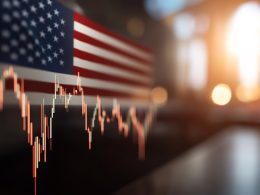Heartbreaker: Soft Patch Hits Stock Market
by Liz Ann Sonders, Senior Vice President, Chief Investment Strategist, Charles Schwab & Co., Inc.
June 13, 2011
Key points
- We remain in the soft patch versus double-dip recession camp, believing a lot of the weaker growth has been from temporary factors.
- Investor sentiment has become decidedly pessimistic … a contrarian positive for stocks.
- Market breadth also shows the market at extremes typically followed by a bounce.
If you're a US Treasury bond market watcher, you know that the drop in yields suggests a slowdown in economic growth. If you're a stock-market watcher, you know the same thing. Bonds started telling the weak growth story sooner than stocks, but that's often the case. The question remains whether it's another soft patch, like last summer, or something deeper and more sinister.
Today's report will dive into some of the technical and sentiment conditions present in the stock market. Although I have no clearer a crystal ball than the next strategist, I will give you some thoughts on the likely direction of the stock market in the near- and longer-term.
Before we get to the market though, let me share our macro thoughts. We remain of the view that this slowdown is a soft patch, not a sign of an impending second recession (the dreaded "double-dip").
Temporary factors contributing to weaker growth so far this year:
- Japan's earthquake/tsunami/nuclear disaster had a major impact on the global supply chain, including notably within automobiles and semiconductors.
- Oil prices rose $30 during the five months from late November to late April … every $10 increase shaves at least 0.5% off gross domestic product (GDP) growth.
- Winter weather was brutal and though it was followed by spring tornadoes, most of the impact is dissipating.
We're not out of the woods, though. Not only has this been a painfully anemic recovery, it's been characterized by ample volatility in the numbers, certainly in jobs. For what it's worth, the volatility and weakness we're experiencing is the norm following a severe financial crisis, as per the studies of noted economists Carmen Reinhart and Ken Rogoff.
The most significant risks that remain are:
- A further and steeper decline in housing than what's currently assumed.
- A harder-than-expected economic landing for China's economic growth.
- A longer-than-expected string of weak jobs reports (both initial unemployment claims and payrolls).
- Further fallout from the euro-zone sovereign debt crisis.
- Escalation in Middle East tensions.
What could go right?
For everything that could go wrong, there remain things that could go right. Before the latest shocks to the system, business confidence had been riding relatively high on improving credit conditions.
Supply-chain recovery in Japan, the world's third-largest economy, is occurring quite a bit more quickly than many anticipated. For those who believe Japan's disruptions are just an "excuse" for weak growth, note that last week's Federal Reserve Beige Book mentioned Japan's supply disruptions 25 times!
As an example, according to ISI Group, US vehicle production in July is scheduled to surge nearly 24% month over month. Given that the auto industry now contributes more to US GDP than residential investment (housing), this coming surge could alleviate some of the double-dip recession concerns.
ISI has also been reporting that we may soon hear about a $2 trillion deficit-reduction package alongside an agreement to raise the debt ceiling before default risk escalates. There is also discussion of a cut to the payroll tax businesses pay, although there remains significant controversy about its benefits.
In the meantime, ISI just completed a capital spending ("capex") survey of nearly 100 companies and it showed the highest reading in the nine years it's been conducted. They note there's been a 94% correlation between the survey and subsequent capex. Their hiring survey, which also has a 94% correlation, also showed the highest reading on record.
On energy prices, although there was no agreement on "official" output by the Organization of the Petroleum Exporting Countries, Saudi Arabia is likely to increase production, which could put downward pressure on oil (and gasoline) prices.
On top of that, if the Strategic Petroleum Reserve is tapped, that would likely also keep prices in check; not to mention the potential powerful impact if Muammar Gaddafi steps down from power in Libya, as has been rumored.
And it's not only in the United States that growth is slowing. Although I listed a hard landing in China as a risk, we could also see an end to China's monetary tightening if growth slows. On that note, tightening by the European Central Bank might come to at least a short-term end, as well, if inflation risks ebb and growth remains under pressure.
Reason for hope on the economic front … how about the stock market?
The S&P 500 has been down for six consecutive weeks, as has been well reported in the media. The correction so far has taken 6.8% out of the S&P 500 since its late-April high. The S&P 500 has had declines for six consecutive weeks an ironic six other times since 1995. The average decline over those periods was -11.2%.
As calculated by my friend Ed Yardeni, president and chief investment strategist of Yardeni Research, Inc., big gains did occur in the past during the six weeks from the bottoms of those periods, though the S&P 500 did not make new highs during any of them. The S&P was up an average of 5.8% from the bottoms, and rose four out of five times in the past.
Weak market action certainly worked its "magic" on investor sentiment, typically a contrarian indicator of market performance. Among the indexes I track are the bullish/bearish poll from the American Association of Individual Investors (AAII) and SentimenTrader's Smart Money/Dumb Money (SM/DM) Confidence survey.
AAII's latest poll shows that only 24% of respondents are bullish (expect a higher stock market during the next six months), while nearly 48% are bearish. The AAII "Bull Ratio" = % bulls / (% bulls + % bears).
As seen in the chart below, it dipped below 34% for the first time since last August, and for only the fourth time since the March 2009 market low, according to SentimenTrader. The six-month forward returns in the S&P 500 after those instances were +20.4%, +11.4%, +23.9% and +29.3% (the dates were July 2, 2009; October 30, 2009; July 2, 2010 and August 20, 2010).
AAII Bull Ratio at Extreme Low

Source: American Association of Individual Investors, FactSet and SentimenTrader.com, as of June 8, 2011.
SentimenTrader also added another criterion when analyzing this data given the market presently not being far from a recent high. Going back to the survey's inception in July 1987, the table below highlights every instance when the Bull Ratio dropped below 34% and the S&P 500 was within 7% of a 52-week high. The returns were taken as of Wednesday closes, which is when the AAII survey stops taking responses each week.

Source: SentimenTrader.com, as of June 8, 2011.
Next, let's have a look at the latest spread between "smart money" and "dumb money" confidence.
Smart Money More Optimistic Than Dumb Money

Source: SentimenTrader.com, as of June 10, 2011. When Smart Money Confidence Index is at 100%, it means that those most correct on market direction are 100% confident of a rising market. When it's at 0%, it means good market times are 0% confident in a rally. The Dumb Money Confidence Index works in the opposite manner.
The spread between the two is now at +25% for only the second time since the March 2009 bottom (late May 2010 was the other instance).
During prior bull markets, a spread this wide led to positive three-month returns 84% of the time. As SentimenTrader notes, extremes can always get more extreme, but the market is quickly reaching a point where it should put in at least a short-term low.
What about low volatility … complacency?
Some have fretted that the volatility index (VIX) has remained low throughout the correction to date (see chart below). Given that the VIX is considered a "fear gauge," does this signal complacency among traders? Interestingly, looking back, a stock market correction without a spike in the VIX was a better buy signal than sell signal.
VIX Extremely Low

Source: FactSet, as of June 10, 2011.
According to SentimenTrader, every time since 1986 that the S&P 500 fell to at least a one-month low by losing at least 4% while the VIX also declined, the market's returns one month later were positive 88% of the time, with a median gain of greater than 6%.
Breadth and TRIN
Market breadth has been weak through the correction so far, which is no surprise. In other words, the selling pressure hit nearly every variety of stock, sparing few. In addition, volume flowing into the market has been skewed more heavily to those stocks trading down each day.
This kind of dynamic causes the Arms Index (also known as the TRIN) to spike higher. I've followed the TRIN since my early days on Wall Street in the mid-1980s. It divides the Up Issues Ratio by the Up Volume Ratio.
Essentially, a higher TRIN means traders are more aggressively trading stocks to go down than those that go up. If the ratio is below 1, it is considered bullish for the market. If it is greater than 1, it's considered bearish for the market. An exception to that rule of thumb is if it gets so far above 1, or stays there for a string of days, it becomes a contrary sign of excessive selling pressure.
As you can see below, the ratio was greater than 1 for five consecutive days, with the five-day average moving above 2 last week. According to SentimenTrader, that is extreme.
Spiking TRIN

Source: SentimenTrader.com, as of June 10, 2011.
During the past 70 years, there've only been a handful of times that matched this selling pressure. The table below lists each of them, along with the S&P 500's performance going forward.

Source: SentimenTrader.com, as of June 10, 2011.
As you can see, only three instances occurred prior to 2004. That phenomenon likely reflects the changing structure of the market as it's moved toward decimalization and the greater use of exchange-traded funds. In sum, however, you can see that although the short-term performance after such extremes was still troubling, the longer-term picture was healthier.
Not out of the woods
That would sum up our view, as well. We're likely not out of the woods, either for the economy or the stock market. Last summer's correction was about 15%, and although we may escape that severe a correction, to see something more than the 7% we've seen since the late-April highs would not be surprising.
It is one of the reasons why our sector recommendations have only two outperform ratings (technology and health care) and two underperform ratings (consumer discretionary and materials). For those of you with a more tactical orientation, it suggests a continued need to keep some powder dry.
But longer term, our optimism is not meaningfully dented. More than half of the S&P 500's stocks are now oversold and setting up for bounces, at least. Stocks are trading at a low 13 multiple on 2011's expected earnings, which do not appear to be pie-in-the-sky.
Finally, the path toward monetary policy normalization has been pushed out and rates should remain accommodative well into 2012.
Important Disclosures
The information provided here is for general informational purposes only and should not be considered an individualized recommendation or personalized investment advice. The investment strategies mentioned here may not be suitable for everyone. Each investor needs to review an investment strategy for his or her own particular situation before making any investment decision.
All expressions of opinion are subject to change without notice in reaction to shifting market conditions. Data contained herein from third party providers is obtained from what are considered reliable sources. However, its accuracy, completeness or reliability cannot be guaranteed.
Examples provided are for illustrative purposes only and not intended to be reflective of results you can expect to achieve.
Copyright © 2011 Charles Schwab & Company Ltd.













